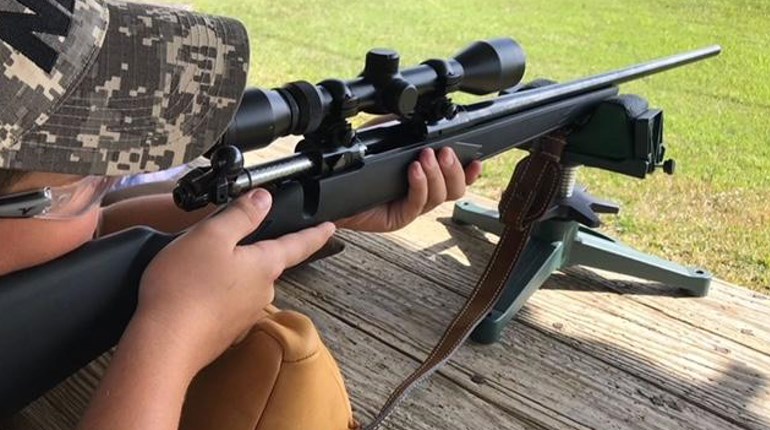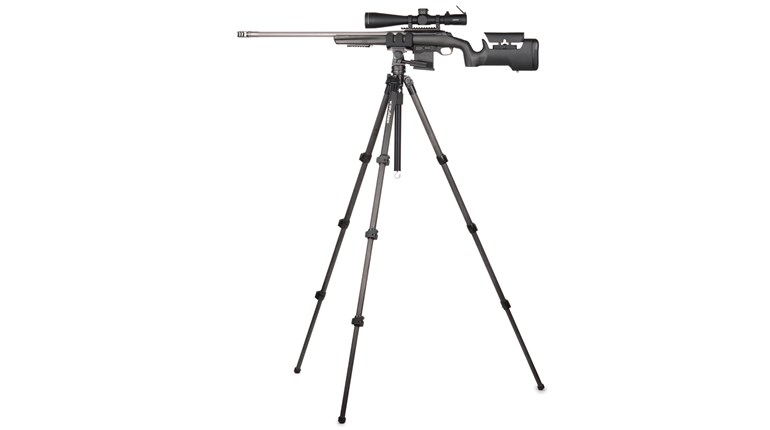
Think you know what these terms mean? Check this mighty compendium lest you fall behind the times and misspeak in front of your peers. Don’t be a fool—stay current with the latest in rifle lingo.
Every spring [following a leap year] I endeavor to provide readers with changes to the intricate and often nuanced spoken word of modern riflery. This year I returned to that trusted source of grammatical prowess, “Magniloquent’s Amalgamated Lexicon of Shoot Words, 47th Edition,” for guidance. What follows is a hand-picked selection of the latest twists on long-gun vernacular. Whether you take notes using pen and paper or with the old Palm Pilot you found in the glove box of your uncle’s ’92 Ford Tempo, strap in for a quadrennial update.
BC: No longer shorthand for a projectile’s ballistic coefficient, BC now refers to the last time a 20-round box of match ammunition could be purchased for less money than the rifle that fires it.
Bright and Shiny Bore: Used-rifle buyers typically encounter this term as a description of corrosion-free barrel innards. But a glut of guns entering the hot resale market has expanded the term’s meaning to include bores that could only be considered bright when looking through them at the big star in the center of our solar system.
Combat-Proven: A long-overdue update expands this qualifier to include paintball, Airsoft, LARPing, anything that looks good in a selfie and firearms that may have been viewed by Department of Defense representatives on a website.
Crisp Rifling: You may think this indicates that a used barrel’s lands and grooves are sharp-edged and intact, but the joke’s on you! This is actually sales-speak for “It may look like a shotgun, but at one time in this barrel’s life, some form of helically arranged, longitudinal grooves were present inside the bore.”
Estimated Delivery Date: Optimists skip right over the first word, thinking this term denotes an actual calendar date. In reality, it translates to “We have no idea, but we think it might be some time before the first permanent human settlement on Mars.”
Greatest [Any firearm, component or accessory] in the History of History: Typically found in the pages of flashier gun magazines, Instagram accounts or posted in super-reliable web reviews, this term is code for “I got one of these for free. I like free.”
In Stock: Way back in the halcyon days of 2019, this meant that the item you were looking for was actually on-hand and ready to ship. The updated definition is “We once had it in stock and fully intend to someday have it again. Go ahead and order so we can charge your card and give you an Estimated Delivery Date (see above).”
Mil-Spec: Something that is black, probably made of metal and which could be mistaken for genuine military equipment if viewed in dim lighting.
One-Group Hole: This is what you produce when lacking the time or energy to produce one-hole groups. One-group hole shooters are most commonly encountered just before whitetail hunting season starts. They typically fire a single shot, hitting paper somewhere, and then loudly proclaim that their rifle is right on the money. If you look up from your own rifle quickly enough, you may get a glimpse of their taillights as they speed away from the range. Given the state of ammunition pricing and availability today, one-group hole shooters would appear to be a lot smarter than I once thought.
Out-of-Battery Firing: Anytime that a rifle fires without the bolt fully closed, bad things result. But, this condition has a newer, more sinister connotation. When it describes a techno-savvy, PRS shooter whose Bluetooth rangefinder/chronograph/riflescope/playlist/livestream network has just crashed in the middle of a stage, it is truly catastrophic. Modern OOB-firing incidences are usually accompanied by extraordinarily loud whining and cries of “Not fair!”
Plinking: An obscure, antiquated practice where a shooter would simply have fun slinging rounds downrange as though there was a pallet of cheap ammo waiting in every local gun shop.
Recoil: A physical response that accompanies the horrified realization that you just got a “great deal” on an AR-15 rifle chambered in .218 Bee.
Round Count: Math and context are required for this one. If you are selling your rifle or handing it over to a gunsmith for work, divide the number of rounds you have put through your barrel by 5 to get your round count. Conversely, always multiply the owner’s stated number by 10 if you are on the receiving end of such a transaction.
Split Time: Competitive shooters think this hip phrase denotes chronological measurements of their shots during a stage of fire. Close, but no cigar. Split time is an event that occurs between the moment a group stops shooting and the moment that picking up mixed caliber, steel, aluminum and brass casings begins. It is typically initiated by individuals excusing themselves to “deal with a rattlesnake bite” or “check on something over there.” Fortunately, every group has one shooter who does not get the memo.
Standing Prone: This alternative shooting position is used when you are required to go prone, but simply cannot due to your rain- or sweat-soaked clothes feeling yucky. You know you are doing it correctly when you stand like a hunched-over scarecrow so that no cloth touches your chest, arms or legs. I mastered standing prone during the “Florida” phase of U.S. Army Ranger School in winter, where being warm and dry was more elusive than a Ranger Instructor who liked to cuddle.
Zero Check: Back in the old days, this referred to adjusting a rifle’s sights at a realistic distance like 100 or even 200 yards. A proper zero check now consists of moving waaaay back—to about 15 yards from the target—then shooting the center out with a random number of rounds and calling it “good.” The cleverest among us combine one-group holes and standing prone with their zero checks, saving time, ammo and any potentially bad shooting for another day.
We will revisit this in 4 years to keep everyone up to date on the daily battle to remain riflespeak fluent. In the next few months, you can expect other pertinent topics, such as identifying venomous bore snakes and which gun oils work best on dry, cracked hands.



































